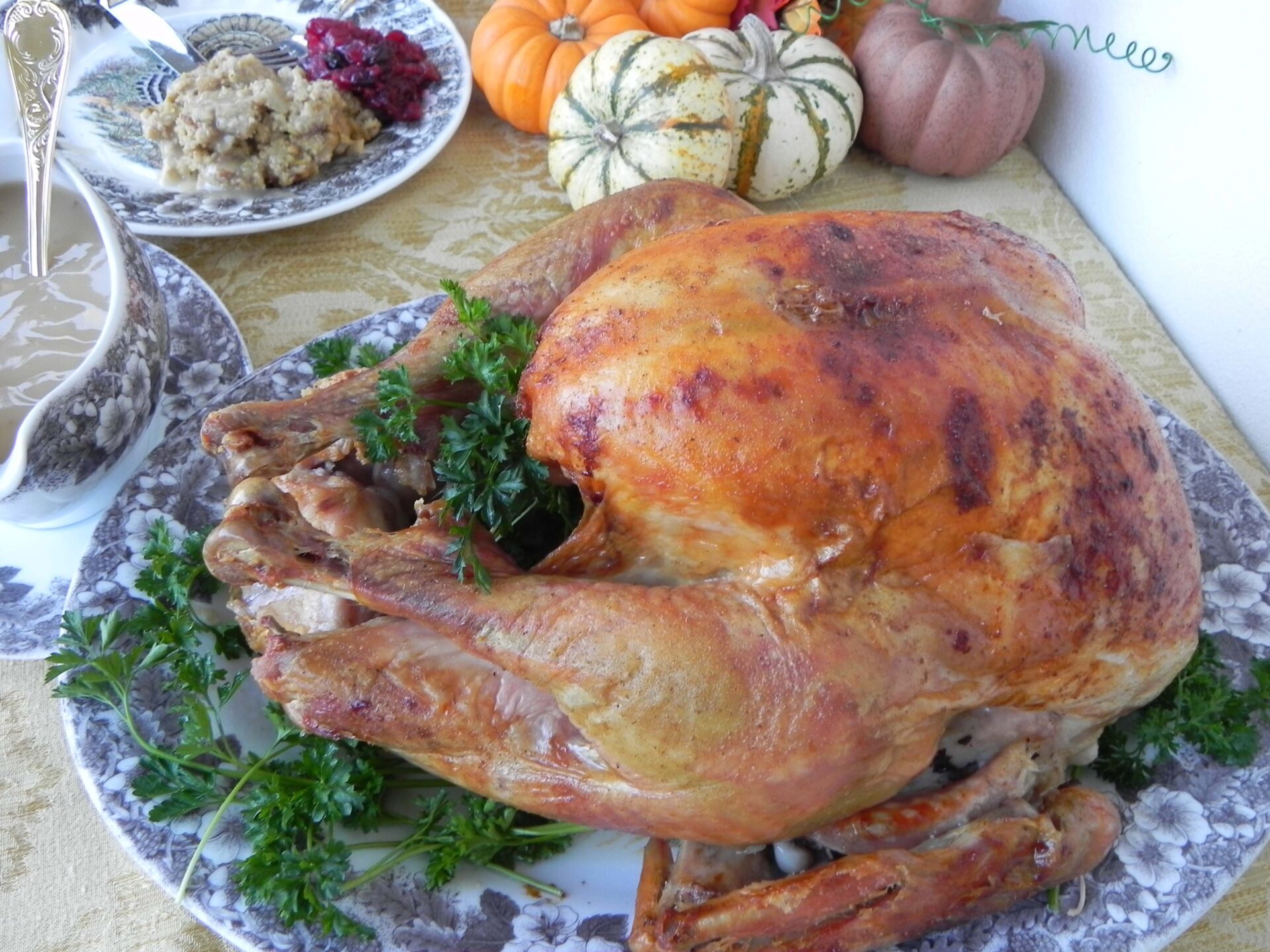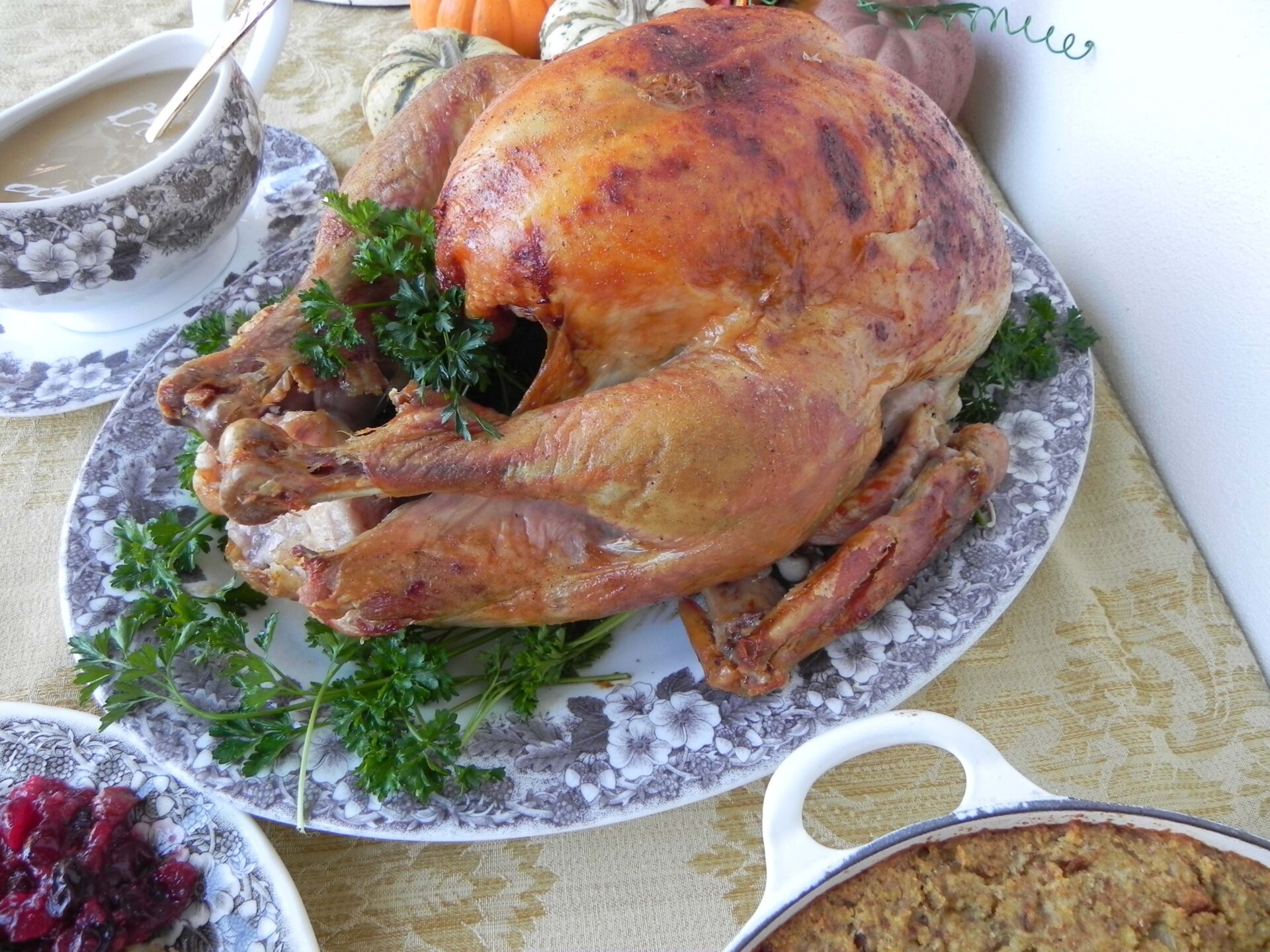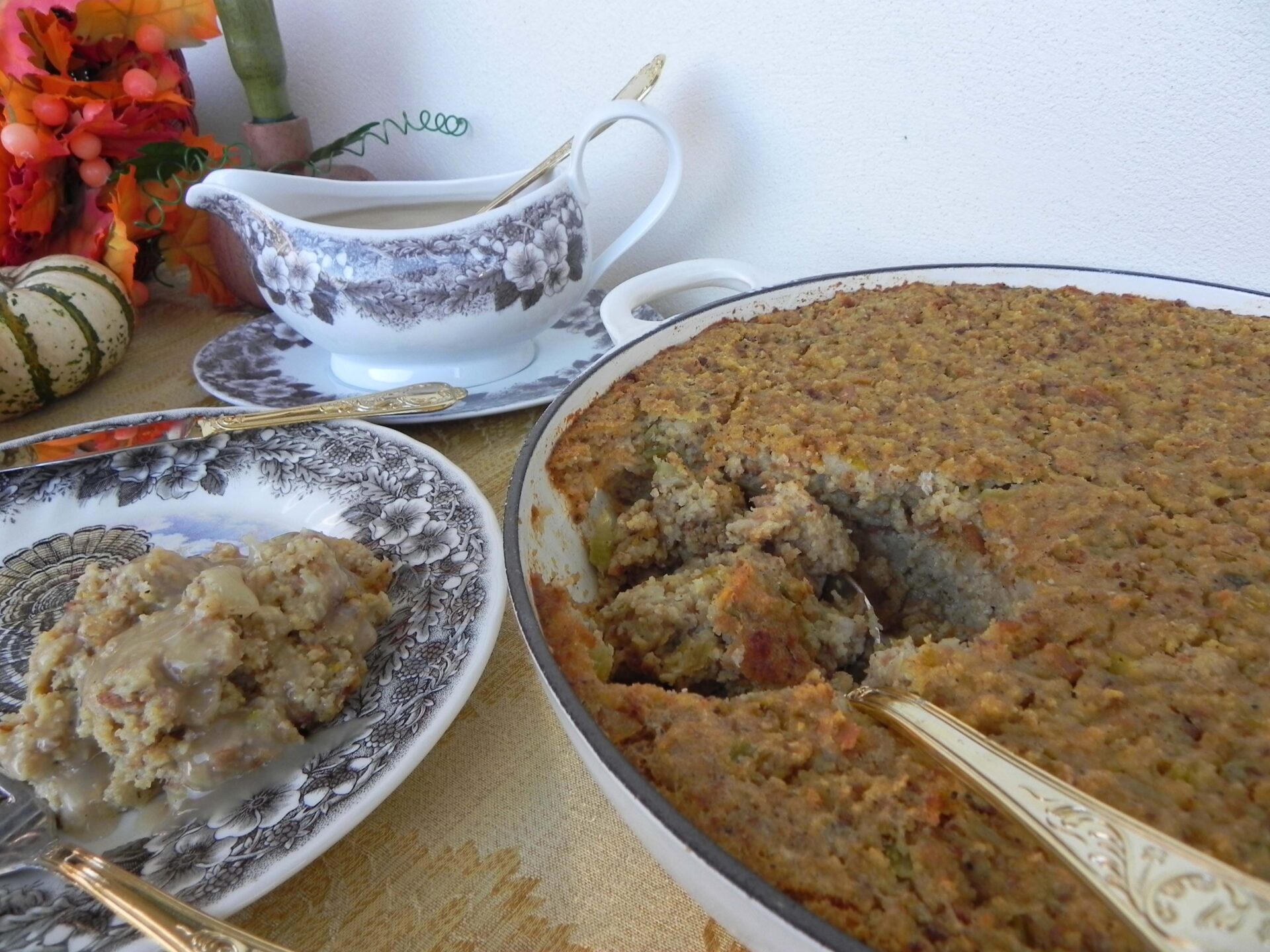Eating Oxford
On Cooking Southern: Get ‘Er Done – It’s Turkey Time
SOUTHERNISM OF THE WEEK
Plumb et up with it: Totally and completely full and/or overcome from abundance. Like all Americans on Thanksgiving Day…
The Old Bride and family are charting unknown territory this year. We’re sharing a store-bought Thanksgiving dinner in Utah. My friend Bo is calling it a Turkey Tailgate.
This will be the second time in my semi-long life that we haven’t sat down at a groaning table of food lovingly prepared and shared with extended family and friends. The first experience was memorable, but not in a good way. (FYI, if in San Francisco on Thanksgiving Day, opt for Chinese over the “Southern-style” hotel Thanksgiving buffet.)
Nevertheless, I’ve been told by Hubby to have faith in Honeybaked Ham and the Kimball Junction grocery stores. That’s asking a lot of a Southern mama who cooks. How can I look forward to the holiday flavors of a western mountain culture where bourbon and grits and gumbo are anathema?
So, I am dragging a stow-able tote filled with frozen cheese straw dough, desserts and assorted Southern condiments across the continent, lapdog also in tow. I may have to swallow one of the doggie tranquilizers to make it through the trip, which for the usual convoluted Delta reason, routes me westward via Atlanta. Nothing beats adding 4-plus extra hours of travel time on America’s busiest flying day of the year.
There’s a strong possibility someone will be whipping up last-minute homemade cornbread dressing on Thursday if the store-bought stuff tastes too foreign. I don’t care if the Utah kitchen is not equipped for real cookery. A cast iron skillet lurks in the cupboard.
At any rate, here are some quick tips for making cornbread dressing and for roasting a traditional turkey.
Good luck and good eats, y’all. And God bless us each and every one.
PREP AND COOK THAT TURKEY
1. Select the turkey. Allow 2 pounds per person.
2. Thaw the turkey if buying frozen – three to four days in fridge for a 12-15 pound bird, and up to five days for a bird 18 pounds or larger. In a pinch, thaw the frozen bird on Wednesday by submerging it in cold water that you change once an hour… may need a brick to hold it under water.
3. Remove turkey neck and giblets from the cavities. Rinse and pat dry.
4. Brine the bird overnight or at least 4 hours to add moistness. (See brine instructions and recipe.)
5. Position the bird on an oiled, removable rack centered in a large shallow baking pan. NOTE: If cooking in a turkey roaster, the bird will take longer.
6. To prepare for cooking, tuck wings underneath the carcass.
7. Stuff sprigs of fresh rosemary, sage and thyme in the bird cavity, along with a half stick of salted butter. (Slices from one apple may be added, too.)
8. Tie turkey legs together with kitchen twine if not already tied.
9. Grease the turkey all over with olive or canola oil — butter will brown too fast. (Brined birds don’t need seasoning)
10. Fold a foil triangle large enough to cover the breast area of the bird. Grease the bottom side only of the triangle and loosely fit it over the turkey. REASON: Breast meat cooks faster than the dark meat areas of thighs and legs.
11. Preheat oven to 450-500˚F.
12. Place turkey in oven, legs first if oven is deep enough (the legs need the extra heat at the back of the oven). Bake at this temperature for 30 minutes, and lower heat to 350˚F. Allow 15 minutes per pound for birds up to 6 pounds; allow 20 minutes per pound for larger birds. Do not open oven during this time. Brined birds cook faster.
13. About 1 hour before completion, as bird nears done stage, remove foil triangle from breast and drizzle with melted butter. Continue roasting.
14. Test for doneness by inserting meat thermometer horizontally into breast (not touching breast bone). Breast should read 165˚F, thighs 180˚F. Juices should run clear, not pink. Do not overcook (drumstick will jiggle if overcooked). Do not rely on the pop-up “done” gauge.
15. Remove turkey from oven and allow it to rest for 30 minutes before carving.
16. Use all of the turkey pan drippings for gravy and for seasoning the cornbread dressing.
For giblet gravy recipe and additional advice regarding your Thanksgiving preparations, click here.
CORNBREAD DRESSING
Each Southerner prepares cornbread dressing slightly differently. Some cooks like their dressing to be firm enough to slice it. Feel free to include fine-chopped turkey to the mixture. Most of us prefer it to be the consistency of mashed potatoes. Successful cornbread is airy but not gummy. Some cooks like their cornbread dressing to have a stronger sage flavor, and some to have a stronger thyme flavor. In my opinion, VERY LITTLE SAGE GOES A VERY LONG WAY.
10-inch cast-iron skillet of yellow cornbread, baked one or two days ahead*
10 stale white or whole wheat bread heels and slices (may use 1 large Italian
baguette loaf, baked and grated)
2 T poultry seasoning
1/2 to 1 tsp rubbed sage
1/2 tsp ground black pepper
1 tsp salt
3-4 large stalks of celery, chopped fine (1 to 2 c)
PLUS the celery heart and leaves, also chopped fine
1 large white onion (2-1/2 to 3 c), chopped
1 stick butter (3/4 to 1 c)
8 c chicken stock, heated
1 c turkey pan drippings from the cooked turkey
2 eggs, lightly beaten
Make a skillet of cornbread one or two days ahead. Leave it out overnight to get stale. Crumble the cornbread and grate white bread into a very large baking pan. I do this the day before Thanksgiving, using the lid of a large turkey roaster. Combine seasonings together and sprinkle over the crumbs. Use hands to toss until mixture is completely blended.
While the turkey is cooking, in a large skillet, sauté the celery and onion in butter over medium heat until transparent. Add hot chicken stock and simmer until stock reduces by about two cups. Combine the sautéed celery and onion stock with the breadcrumbs and mix well.
As soon as the turkey comes out to rest, add heated chicken stock and turkey drippings until completely blended. Stir in beaten eggs. Keep adding chicken stock until the uncooked dressing is slushy but not watery. Ladle into a greased or oiled large casserole dish or a 9-by-13-inch baking pan. The uncooked dressing should be jiggly when the pan is lightly shaken. It is better to be too moist than too dry. Pour uncooked dressing into the pan in which it will be cooked.
Preheat oven to 350˚F. Total cooking time of the dressing should be about 45 minutes. Do not overcook (center of dressing will be firm when jiggled).
VARIATIONS: For simple oyster dressing, add oyster liqueur and raw oysters to the mixture; reduce chicken stock in proportion to oyster liqueur. For a savory Yankee stuffing, mix in chopped apples, roasted pecans and cracklin’s.
Click here for my classic Skillet Cornbread recipe.
Laurie Triplette is a writer, historian and accredited appraiser of fine arts, dedicated to preserving Southern culture and foodways. Author of the award-winning community family cookbook GIMME SOME SUGAR, DARLIN’, and editor of ZEBRA TALES (Tailgating Recipes from the Ladies of the NFLRA), Triplette is a member of the Association of Food Journalists, Southern Foodways Alliance and the Southern Food and Beverage Museum. Check out the GIMME SOME SUGAR, DARLIN’ website and follow Laurie’s food adventures on Facebook and Twitter.
Follow HottyToddy.com on Instagram and Twitter @hottytoddynews. Like its Facebook page: If You Love Oxford and Ole Miss…

































Tim Heaton
November 23, 2015 at 3:59 pm
The best tip I was ever given is to place a pan of water in the oven during the entire roast. Ever do beer can chicken? Works for the same reason. Also, I used to believe thermometers were for rookies. No more. 175 and take that bad boy out.
Laurie Triplette
November 24, 2015 at 4:04 pm
Amen Tim. I cheat and put a bit of water in the turkey roasting pan below the rack. Yes to drunken chicken. Check out my column on the subject: http://hottytoddy.com/2014/05/09/on-cooking-southern-drunken-chicken/